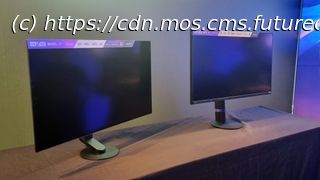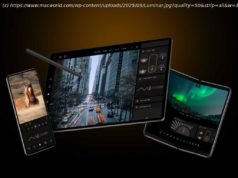But the Sony tax pricing nearly had me flat on my back.
Gaming monitors can be much of a muchness when it comes to design. While you’ll occasionally find the odd ill-advised logo projector, or perhaps some hidden ports in the base, really they all look mostly the same once you look beyond the panels themselves.
The Sony Inzone M10S and Inzone M9 II, however, bring something a little different to the party. What comes into contact with your desk is a small, circular plate designed to take up as little footprint as possible. This is so gamers can happily move their keyboards, mice, and other desk detritus into whichever position is most comfortable, without the monitor stand getting in the way.
That being said, with such a small base design, I couldn’t help but think they looked precariously close to falling over. At the product demonstration, I was invited to wobble them, knock them around, and test the stability of what looked suspiciously like an ineffective (if pretty) stand design. In practice, however, they really are much more stable than I was expecting, thanks to a clever bit of mechanical engineering.
The center of gravity is actually right behind the panel, meaning that all the weight is centered in a straight line going down to the middle of the base. They’re a bit like Weebles—you can wobble them, but the second you let go they want to return to their upright position almost immediately. Clever, that.
In terms of specs, the Inzone M10S isn’t just a pretty stand. It’s a 27-inch 1440p OLED panel with up to a 480 Hz refresh rate, 98.5% DCI-P3 coverage, a 1,300 nits peak brightness rating and a host of esports ready features.
That includes a 24.5-inch « professional mode » that reduces the displayed image down to a smaller size. Several assembled esports pros from the Fnatic esports team (which Sony collaborated with to help design the display) explained this was because 24-inch monitors are the default size for competitions, so you can practise your skills on the same-sized screen as the professionals before taking to the big stage.
Home
United States
USA — software Sony's speedy new Inzone gaming monitors feature trick stand designs that resolutely...






